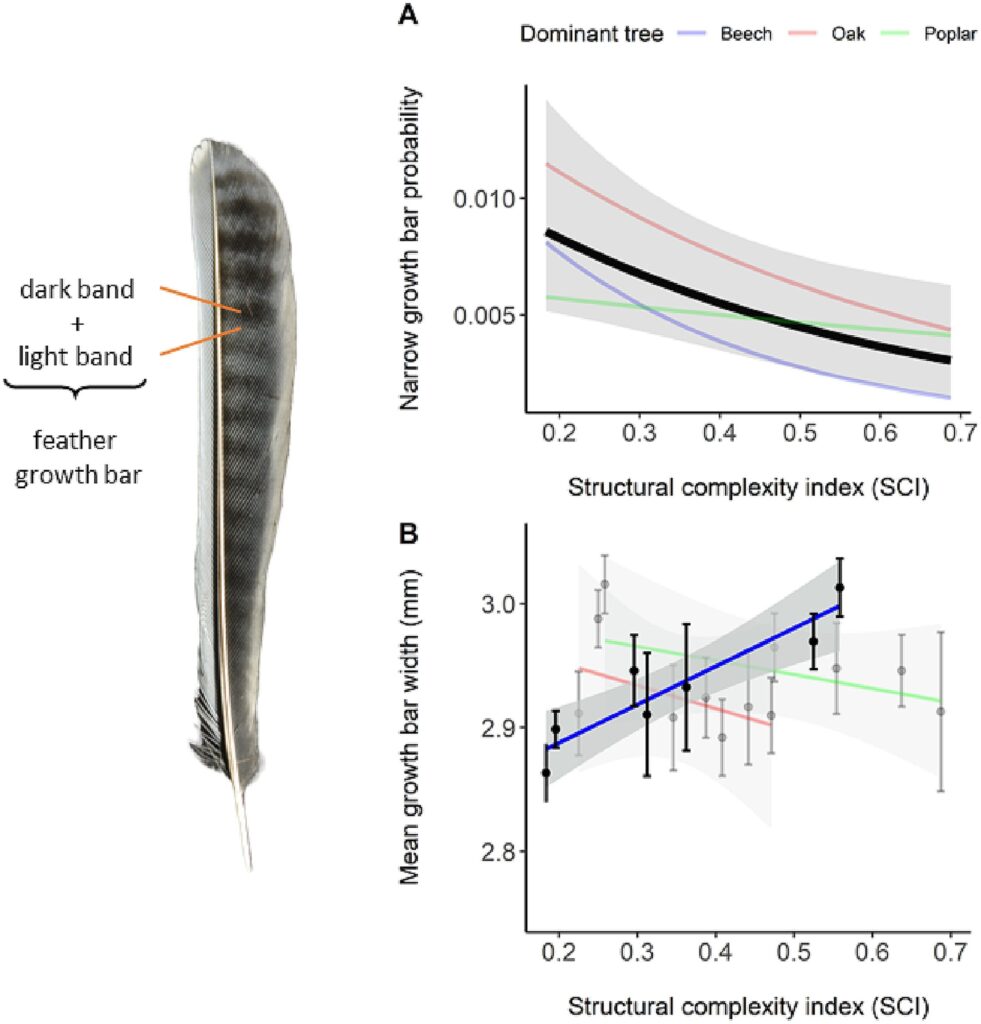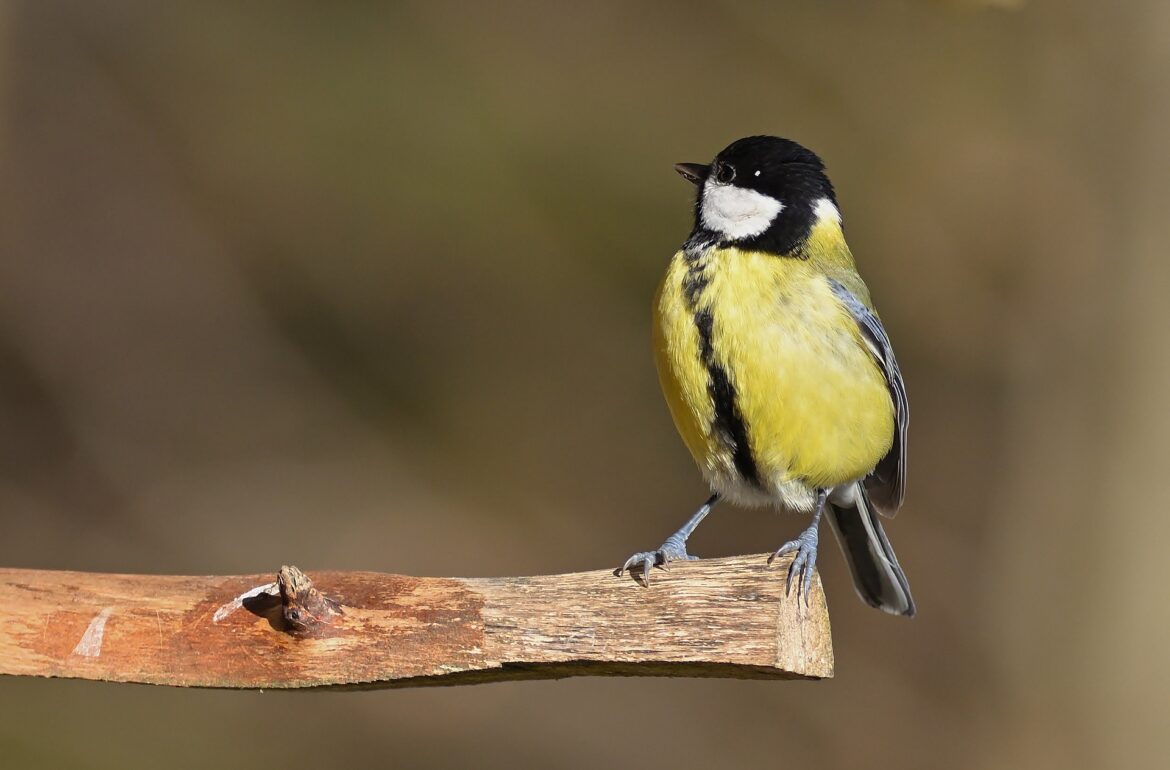A forest that is diverse and has multiple tree species is more resilient. This is also starting to be considered more in commercial forests of North America and Europe, where very old trees also grow. Previous research confirms that diverse forests have a greater variation of species, including more mosses, lichens, fungi, amphibians, arthropods, reptiles, mammals and birds, but the impact of forest structure on species has received little attention. However, we know that the impact exists. For example, in Finland’s sparse forests, where Eurasian treecreepers (Certhia familiaris) have less food, stress indicators measured in their blood are higher and their chicks are in poorer condition.
Birds moult at least once a year. The rate of moulting depends on the bird’s health– the healthier the bird, the faster the new feathers grow. Conversely, the rapid replacement of old worn feathers with new ones is essential because the bird’s ability to fly decreases (waterbirds temporarily lose their ability to fly) and they become easy targets for predators. A growing feather retains growth bars, which can be measured using a technique known as ptilochronology to determine how quickly the feather has grown; the wider the bars or the gaps between them, the faster the feather has grown. Birds with good nutrition grow their feathers faster and their bars are wider, whereas birds raised in poor conditions have narrower bars. The growth bars on feathers are similar to tree rings, but on a bird’s feather, one dark and one light bar form each day, whereas on a tree, one ring forms each year.
Scientists measured the growth rate of 248 great tit (Parus major) tail feathers in different structured forest patches between Ghent and Brussels in Belgium. Unlike in Estonia, the main tree species there are oak, beech and poplar. The study revealed that in forests with a more complex structure, the growth bars of the feathers were wider, indicating that the birds were better nourished there compared to in forests with a simpler structure. The reason could be that forests with denser and taller canopies and abundant vegetation provide more food and shelter.

Forest structure and dominant tree species best explained growth bars width – the more complex the structure, the wider the bars, particularly in beech-dominated forests. It is worth noting that the feather tracts of birds living in oak and poplar forests were unaffected by forest structure, whereas the width of the growth bars in beech forests did not depend on the local vegetation and dead wood.
The likelihood of a tail feather having one or more narrow growth bars, which indicates poor health or living conditions for the bird, was 2.82 times higher in forests with simpler structure; similarly, in forests with less understory vegetation, feathers were 2.19 times more likely to have narrow growth bars.
Beech forests are not a good feeding ground for the great tit because there are few caterpillars. However, the abundance of caterpillars depends on the forest structure – the more diverse the forest, the more caterpillars there are. Oak forests have significantly more insects and thus more food sources, so birds can find enough food even in oaks with poor structure. Based on feather growth rate, bird-friendly forestry should aim for forests with a more diverse structure – extending the rotation period is the simplest way to accomplish this because old-growth forests have a more diverse structure.
Unfortunately, there is a contradiction in modern forestry. Beech forests, which support greater species diversity, are between 100 and 170 years old, but their current rotation period is less than a century. The situation could be improved by preserving individual old trees in commercial forests. The same condition has also been observed for mosses in Estonia.
It has been known for over half a century that forests with taller and more complex canopies and vegetation support more diverse bird populations, but what makes this study unique is the conclusion drawn from the growth rate of great tit feathers, demonstrating that forest structure affects individuals within species. The results also suggest that since a more diverse forest is more resilient to climate change, the animals living there are also more resilient.
The authors of the study emphasise the importance of conducting more species-specific research on forest species conditions. Such research can provide recommendations to both forest managers and policymakers, potentially changing forestry practices to preserve forest diversity and ecological roles.
The research paper reference: Bram C, Vanroy T, Verheyen K, Baeten L, Martel A, Pasmans F, Strubbe D, Lens L (2023). Avian Nutritional Condition Increases with Forest Structural Complexity. Ecological Indicators 154: 110536, https://doi.org/10.1016/j.ecolind.2023.110536.
This article is writteb by Marko Mägi. It was originally published on the “Birdwatcher blog”.
Read more from our webpage how Bird’s Stress Can Be Measured in Saliva!
 Back
Back



